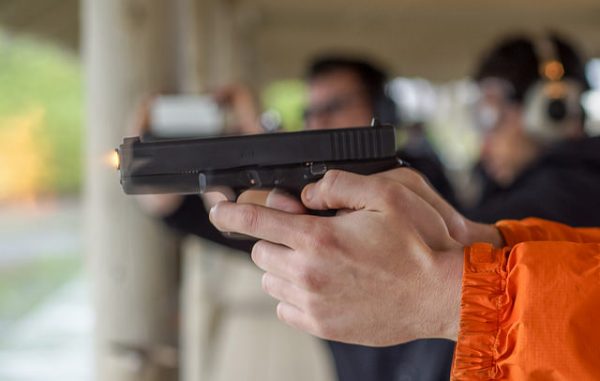
With police use of force and mass shootings occupying the center of the public’s discourse on public safety, single incident homicides and suicides, which comprise the majority of gun violence, fly relatively under the radar. Social science sheds light on the rates and distribution of gun violence, as well as the most effective strategies to reduce it.
In 2012, there were over 32,000 deaths by firearms in the United States, which is a significantly higher rate compared to similar countries like Great Britain. Although homicides commitment with firearms are declining overall (though the suicide firearm rate is increasing), the risks for homicide violence vary among demographic groups. In terms of homicide, young African American males and females are at increased risk of firearm homicide compared to other racial groups, but this gap declines with age.
- Garen J. Wintemute. 2015. “The Epidemiology of Firearm Violence in the Twenty-First Century United States.” Annual Review of Public Health 36(5): 5-19.
Research shows that targeted gun seizures can lead to reductions in gun crimes. Additionally, background checks, of both those who have criminal records and those deemed “high risk,” are shown to decrease gun violence and arrests. Gun buyback programs – when the government offers to buy privately owned firearms — have been shown to have no effect on gun homicide or suicide rates.
- Lawrence Sherman and Dennis Rogan. 1995. “Effects of Gun Seizures on Gun Violence: Hot Spots Patrol in Kansas City.” Justice Quarterly 12(4): 673-693.
- Daniel Webster and Garen J. Wintemute. 2015. “Effects of Policies Designed to Keep Firearms from High-Risk Individuals.” Annual Review of Public Health 36: 21–37.
- Richard Rosenfeld. 1995. “Gun Buybacks: Crime Control or Community Mobilization.” In M.R Plotkin (Ed.), Under Fire: Gun Buybacks, Exchanges and Amnesty Programs. Washington, DC: Police Executive Research Forum: 1-28.
Research also indicates that homicidal gun victimization clusters within small groups that are concentrated in particular neighborhoods. Intervention in these networks has been linked to both reduced shooting behavior, as well as reduced firearm victimization. For example, the Violence Reduction Strategy, pioneered in Boston, is a procedural justice initiative that brings gang members together with community members and law enforcement officials for hour long meetings of focused deterrence.
- Andrew V. Papachristos, Anthony A. Braga, Eric Piza, and Leigh S. Grossman. 2015. “The Company You Keep? The Spillover Effects of Gang Membership on Individual Gunshot Victimization in a Co-Offending Network.” Criminology 53(3): 624-649.
- David S. Kirk and Andrew V. Papachristos. 2011. “Cultural Mechanisms and the Persistence of Neighborhood Violence.” American Journal of Sociology 116(4): 1190-1233.
- Andrew V. Papachristos and David S. Kirk. 2015. “Changing The Street Dynamic: Evaluating Chicago’s Group Violence Reduction Strategy.“ Criminology & Public Policy 14(3): 525-558.

Comments 2
L. DeVita — October 27, 2016
I don't find helplessness and total reliance on cops for my safety to be a positive move in "public safety". More than half of firearms deaths are suicide, which is not "gun violence" and none of your concern.
John Jay Research — January 6, 2017
Please note the Boston strategy mentioned is the Group Violence Intervention (GVI) strategy (or "Operation Ceasefire") pioneered by National Network for Safe Communities Director and John Jay College of Criminal Justice Professor David Kennedy: https://nnscommunities.org/our-work/strategy/group-violence-intervention